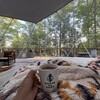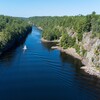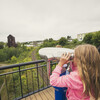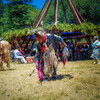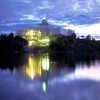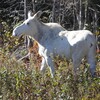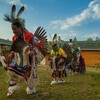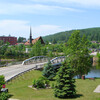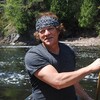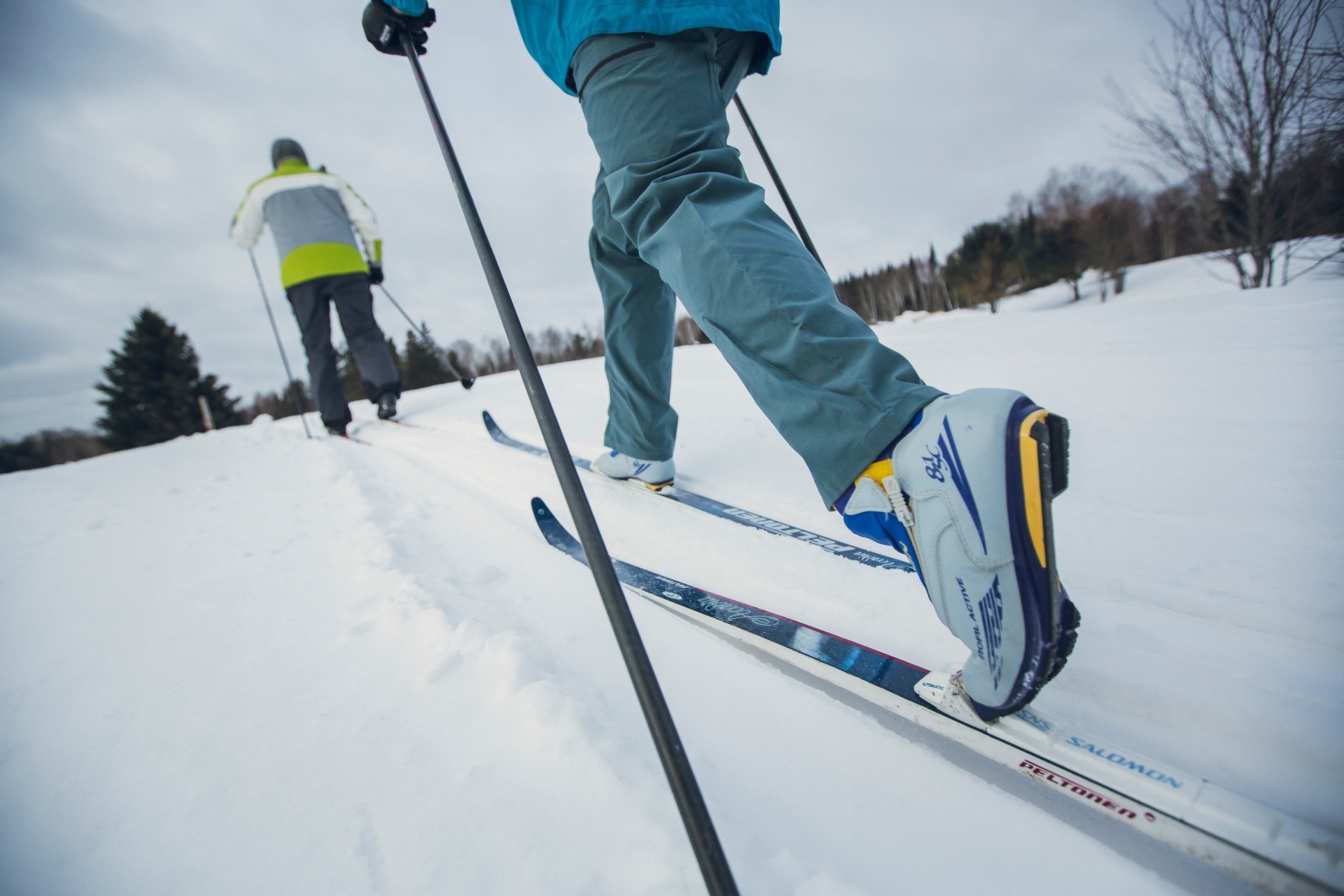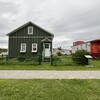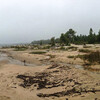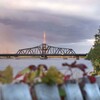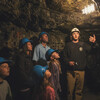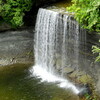
Time to Go Snowshoeing!

It is time to go snowshoeing!
Snowshoes offer a unique perspective on a unique season! Almost truly a Canadian activity, snowshoeing is a magical way to get outside and explore the BIG winter landscape of Northeastern Ontario.
To a new Canadian it might appear strange that we enjoy ambling along over the snow in a manner somewhere between the gait of a duck and a penguin. Then there is the Generation Y and Generation Z, born: 1977-1994 and born: 1995-2012 respectively. And as they have come and will come of age of these generations have and will embrace technology; they are not so much “with” nature and tend to stay within cities and “inside” in general. Snowshoeing may not be on their list, while Netflix is. So for now, we are left with the “Baby Boomers” and “Generation X” the most likely to enjoy snowshoeing.
Fact and Fiction
Cliff Moulder may be one of the last “great outdoorsmen.” He has been on History Channel and other outdoor life television shows. By his own volition he is a “fancier” of snowshoes “for a long time.” He does, however, suffer from nostalgia syndrome—he likes to use vintage equipment.
When asked if he likes the hi-tech snowshoe, here’s what he says. “Of course not but then remember my affliction! I originally viewed the modern snowshoe as a blatant excuse to ignore ten thousand years of evolution but this idea mellowed when I became a snowshoe student.”
He said the new models are user friendly, with no special footwear needed. Low maintenance is another feature—“rodents ignore them” in storage and “anything that can withstand a rental season has to have something going for it.”
He explained the hi-tech snowshoes of today have a “modified swallow tail shape with the tail lopped off so they can fit into the trunk of a car.” Without the tail he calls them “snow draggers” because they drag an enormous amount of snow. In deep snow they create divots and can be a real encumbrance to any one following.” The tail, like the keel on the bottom of a canoe, helps the snowshoe to track better or “straight.” Cliff likens these indentations to elephant tracks. He says, “These new snowshoes are usually too small for any serious back country enthusiast. Elephants are rather ungainly in deep snow – all the more reason for marketers to sell the unsuspecting pachyderm a pair of ski poles so they won’t fall over.” He said, “Most people are using them on packed trails anyway.”
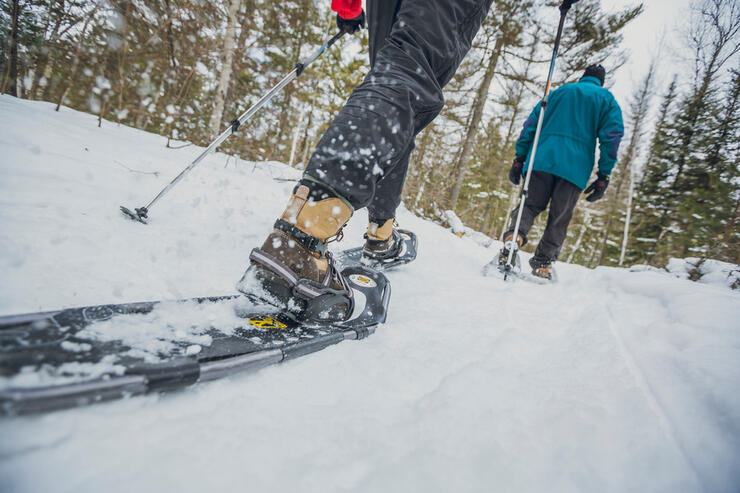
At the same time he said, “You have to love ‘em though as they have put thousands of people outside in winter something that would not have happened with traditional shoes.” He wishes he had developed the new hi-tech snowshoes. “I would be rich enough to collect iconic museum works or art like the vintage snowshoes in the Bata Shoe Museum or the Canadian Museum of History.”
Historically he cited the following: The germ or idea for footwear that would enhance travel on snow originated in Asia and spread west into northern Europe where skis were developed and east across Siberia into North America to become snowshoes. Over the millennia the snowshoe has evolved and so the modern shoes can be considered the present day phase in that process.
Believe it; horses have been trained to wear snowshoes. “Robert Scott’s fatal journey and race to the South Pole may have ended differently had he taken the snowshoes for his ponies. Instead he left the snowshoes behind and the ponies floundered.”
Ash is often thought to be the tree species of choice for the frame but “white birch was the only choice for many builders.” Caribou makes the best “babiche” for netting snowshoes, though eel skin may be better. And the term “cat gut” often applied to the netting is “a problematic term, I strongly doubt its validity.”
You see a good many traditional snowshoes in antique shops like Deegan’s in North Bay. “Most of these were made in Lorettevile, Quebec, by descendants of the Huron, today the company is called Faber.” Click here to see the modern, hybrid and traditional models.
The most famous pair of snowshoes and Cliff has seen them, “are in the RCMP museum in Regina, the pair owned by the infamous Albert Johnson, ‘The Mad Trapper’.”
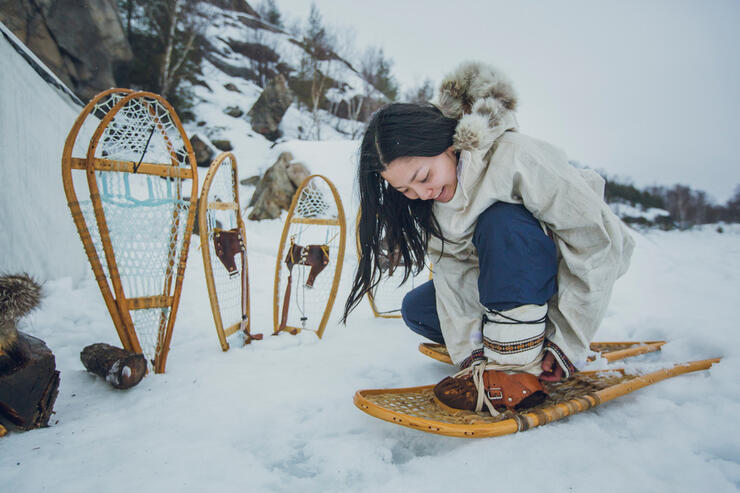
A couple of tips then: “there is no need to walk with a wide stance if you have chosen the correct size of snowshoe and know how to use them. Short shoes are more tiresome to wear than longer shoes and their professed advantage in dense brush is minimal. The real advantage can be in hill climbing if they are properly used. The bear paw label is an overused term—originally reserved for temporary snowshoes, often for children.” And a warning, “most snowshoe harnesses are veritable death traps if one falls through the ice.”
Shop and Snowshoe
Jerry Lefebvre is the third generation owner of Lefebvre’s Source for Adventure in North Bay, 102 years in the business. “In my father’s and grandfather’s era snowshoes were a tool, a necessity for work,” he said. “Within the last two decades it has become a whole lot of fun; people can go just about anywhere and are using golf courses and just about any green space imaginable in and around the city.” Sales remain strong and “it is all about the right pair to buy. ‘The traction system and bindings have allowed recreationalists to use a variety of winter boots.”
Another area to consider is found at the end of MacPherson Drive, just east of North Bay, part of the historic Mattawa River canoe route: the “Stepping Stones” trails, developed by local residents. (WGS 84 E634257 N5130008 or N 46° 18.619 W79° 15.385') Go to the end of Stepping Stones Lane and park at the cul de sac, go down the embankment, there you can view the trailhead map with the various loops. Before you buy snowshoes watch the 1:37 ‘Anatomy of a Snowshoe’ here.
Full disclosure: This writer has too many pairs of snowshoes but still prefers the moccasins and wooden pair for the deep, fresh snow; there is no better winter experience. Your tip of the day is to use your ski poles for stability and ascending, descending and traversing slopes for both new and traditional snowshoes.
This winter might be longer than you think or want so there is no better way to begin snowshoeing than just going and doing it. Where is snowshoeing going? Take your phone along for a selfie; get those ear buds and connect to your tunes; maybe those younger generations will snowshoe after all.
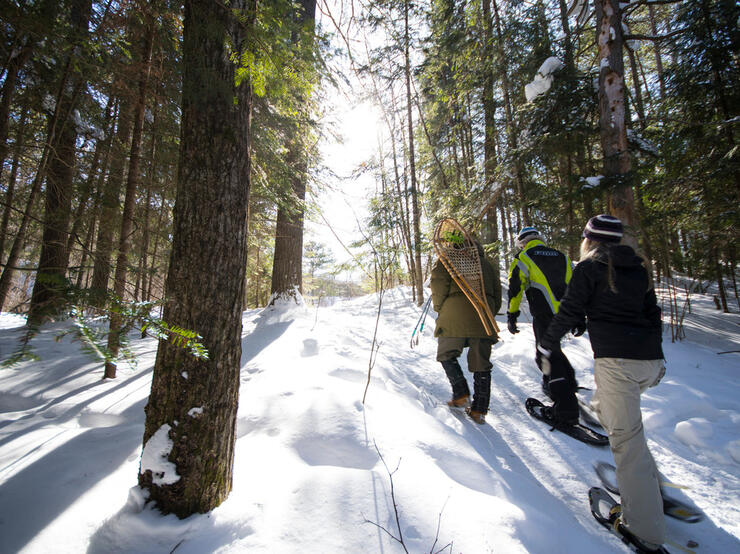
Recommended Articles
The Seven's Best Hikes, Biking Trails and Lakes

7 Best Spots to Check Out in The Seven

Budget Bliss: Explore Northeastern Ontario Without Breaking the Bank

Bring Your Fam!

Time to Unwind: 6 Spa Havens to Discover In The Seven
5 Amazing Places to SUP in Northeastern Ontario

5 Amazing Bike Rides to Discover

Northern Lights in Northeastern Ontario

Northeastern Ontario's Best Pride Festivals

Fish for one of the World's Rarest Species of Trout

An Insider's Guide to Manitoulin Island

6 Small-Town Gems to Explore in Northeastern Ontario

11 Best Things to Do in Kapuskasing, Ontario

